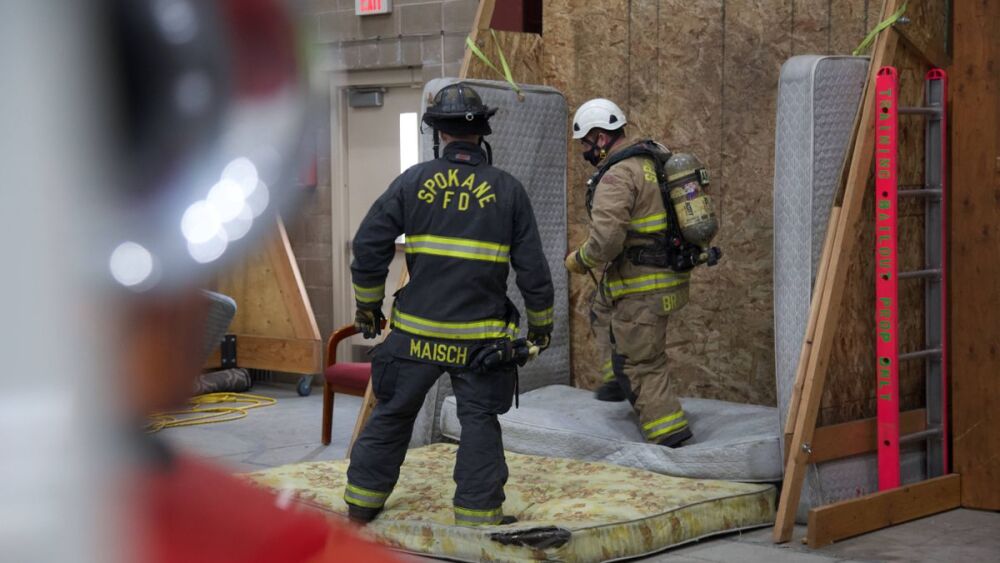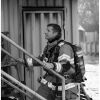A mayday is one of those worst-day moments in the fire service. Our members need to be as prepared as possible to handle these situations, so as a company officer or command officer, you must prioritize training for these events. Mayday training is especially essential, as we can’t predict if or when we may encounter a mayday situation.
Personal responsibility
There must be a sense of personal responsibility to train for these fireground scenarios. We know from research, including data collected from Don Abbott’s Project Mayday, that the best chance of mitigating a mayday event comes from the impacted crew or another interior crew, not a deployed rapid-intervention crew (RIC). As such, we must be prepared to manage the event as a member of an operating company. But what does that look like?
When was that last time you practiced on LUNAR or trained mayday transmission? (LUNAR stands for Location, Unit, Name, Air Supply and Resources, although many instructors are now training members on a more simplified “Who, What, Where” approach to relaying information to command.) As a command officer, when is the last time you rehearsed acknowledging a mayday and deploying a RIC? Communication is a cornerstone of basic operations, whether real-world or training. Taking the time to just transmit these critical messages is a step in building your foundation. We spend so much time practicing fireground size-ups, brief initial reports and CAN reports. We focus on getting these facets of our communication second nature, as we should. Your mayday transmission or command officer acknowledgment is just as important.
Company drills
Company training matters. You need to get the reps in together as a crew to successfully tackle a down firefighter incident. Some organizations have designated companies automatically assigned as the RIC/RIT on fire incidents. If this describes your agency, then you may have a structured and organized training regiment, but if you do not, you need to fill in the void with company training.
Locating the distressed member: The initial mayday transmission can provide critical information for the RIC or another interior company for honing their search locations. If the involved member’s transmission includes vital components such as floor level (division), nearest quadrant or even the specific room, then the RIC can make informed entry and search decisions. All entry procedures are in-play for the responding members tasked with providing aid. This includes utilizing another exterior entrance, such as a rear or side door, as well as VES if there is a need to access upper floors immediately.
We must remember that any tactics we use to locate and remove fire victims can be employed for RIC too. An activated pass alarm is a valuable asset for locating the disoriented, injured or unconscious firefighter. Search teams need to use technology like thermal imaging cameras (TICs) to aid in orientation, but should also consider using tag lines to maintain orientation in the event of a entering a large area or severely compartmentalized structure.
Assessment, air management and packaging techniques: These training points are essential if the member’s PPE/SCBA needs to be managed. Additionally, properly preparing the firefighter for removal speeds the extrication process.
First, conduct a quick assessment of the downed member. If the member is only disoriented but can move on their own, then evaluating air supply may be the only information that needs to be exchanged. Oftentimes, we will only train on securing air supply to an incapacitated member. But the RIC or other company officer needs to determine if this is needed depending on the estimated travel time to exit the IDLH. In any situation, I would not discount time, and execute decisions that promote progress over delay.
For an incapacitated member, train on properly converting waist straps for dragging, or utilize the member’s drag rescue device (DRD) in the coat. Report your initial assessment of the firefighter and anticipated removal decisions to the IC as quickly as you can. This can help the IC deploy additional resources to assist in the extrication process, and summon the appropriate care needs for the member once removed.
Removal techniques: Finally, the company must practice removal techniques that focus on getting the firefighter out of the structure. These techniques need to include window and upper-level removal with ground ladders or aerial apparatus. Transitioning a firefighter through an exterior window is not an easy task. Preparing a downed member to be lifted out of window does require some routine training in order to execute this technique. Whether the firefighter is placed in the arms of an awaiting member on a ground ladder or inside an aerial platform, have your member practice positioning the downed firefighter for these removals frequently.
I also recommend teaching window-to-door opening techniques in order to facilitate this removal option if needed. Remember, this can be performed by additional exterior companies in preparation for removal if the personnel resources are available.
Difficult or challenging removal scenarios should be practiced as well. Good ones to routinely practice are the Denver Drill, Pittsburgh and firefighter-through-a floor drills. Some municipalities and state fire curriculums have rapid intervention courses designed to teach personnel how to locate and overcome the potential challenges for removing a downed member found in these evolutions. These RIC drills can easily be found on YouTube for review and practice. Some of these skills do require props; however, hands-on training is a must regardless of the chosen drill, with an emphasis on simple procedures and rapid removal.
Command training with RIC: As a command officer, take the time to drill with your companies that are practicing these RIC evolutions. You can use this opportunity to work on communications with the RIC, which should strengthen your skills as an IC. Working on these radio exchanges also adds a realistic element to the training evolutions for both parties.
Practicing conducting a 360 and initial size-up of the structure as soon as possible. Ensure that all working companies are oriented to the structure, and call out any features of the structure that may create disorientation on the fire ground over the radio (e.g., walk-out basements or split-levels). Train your members to report their location inside the structure by announcing the floor they are operating on and the closest quadrant, or known exterior wall (A, B, C, D). These factors can help rescue personnel with locating the member faster. Routinely have personnel recite the expected radio information that should be transmitted with their mayday. Practicing LUNAR or other transmission models assists in refining radio exchanges in the event it is really needed.
Multi-company drills
This is the space where both company officers and command officers can train for mayday events in a realistic setting – building out a day drill RIC scenario in a full-scale response training event. Of course, you must follow standards that prevent the use of “real” victims during live-fire training. A training evolution that has nearly the same number of companies the initial command officer would manage is a great way to hone the IC’s ability to maintain accountability and think strategically, all while trying to mitigate a given mayday. In addition, company officers will get the opportunity to experience how other companies would react to the situation, and further sense the roles or responsibilities specific companies must complete during the event.
Start these trainings with simple mayday scenarios like a disoriented company or injured member, while building up into complex evolutions that may require several RIC teams. As a command officer, these trainings are a great way to predict how additional command officers or aides can serve in the roles of RIC management on the fireground prior to the real event occurring.
Take it seriously
Every company officer and incident commander needs to take mayday training seriously. Through personal, company and large-scale training evolutions, officers have ample time and opportunities to become successful for whenever the unfortunate moment occurs that you are needed the most on the fireground.













